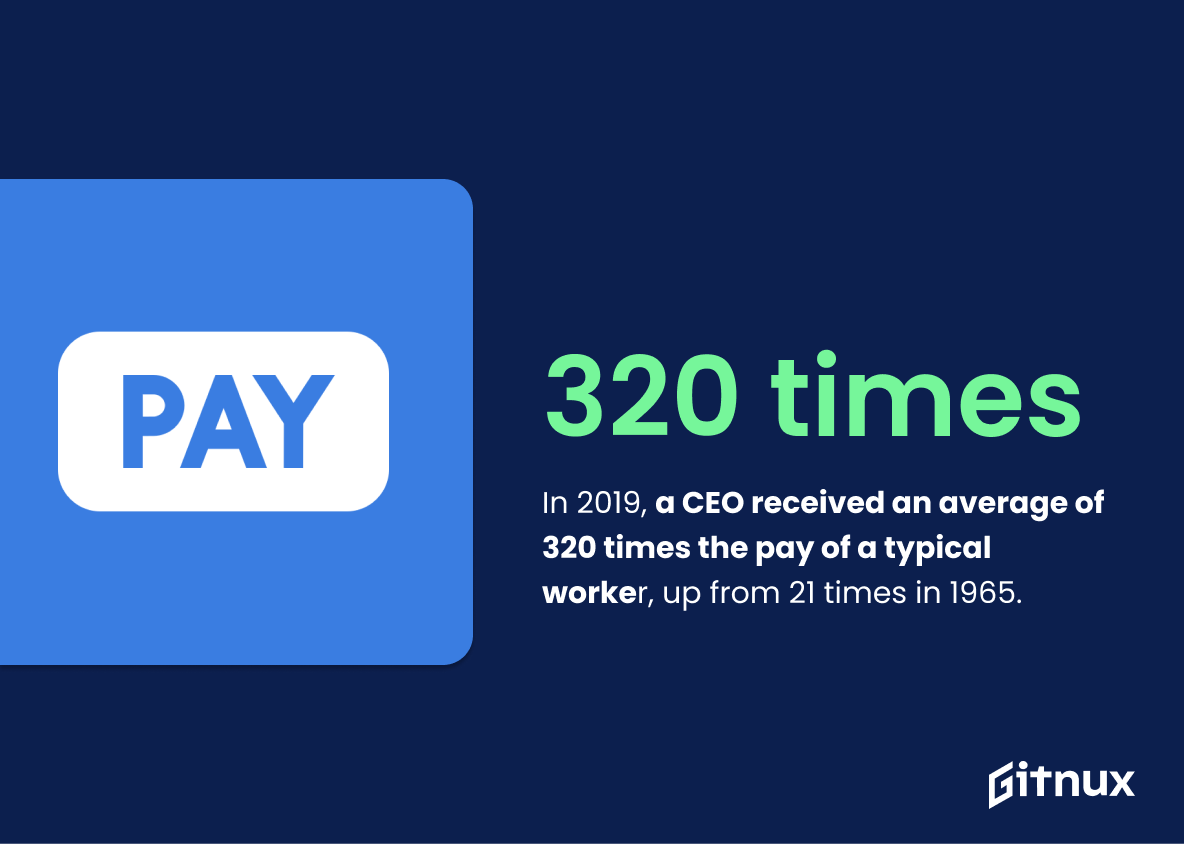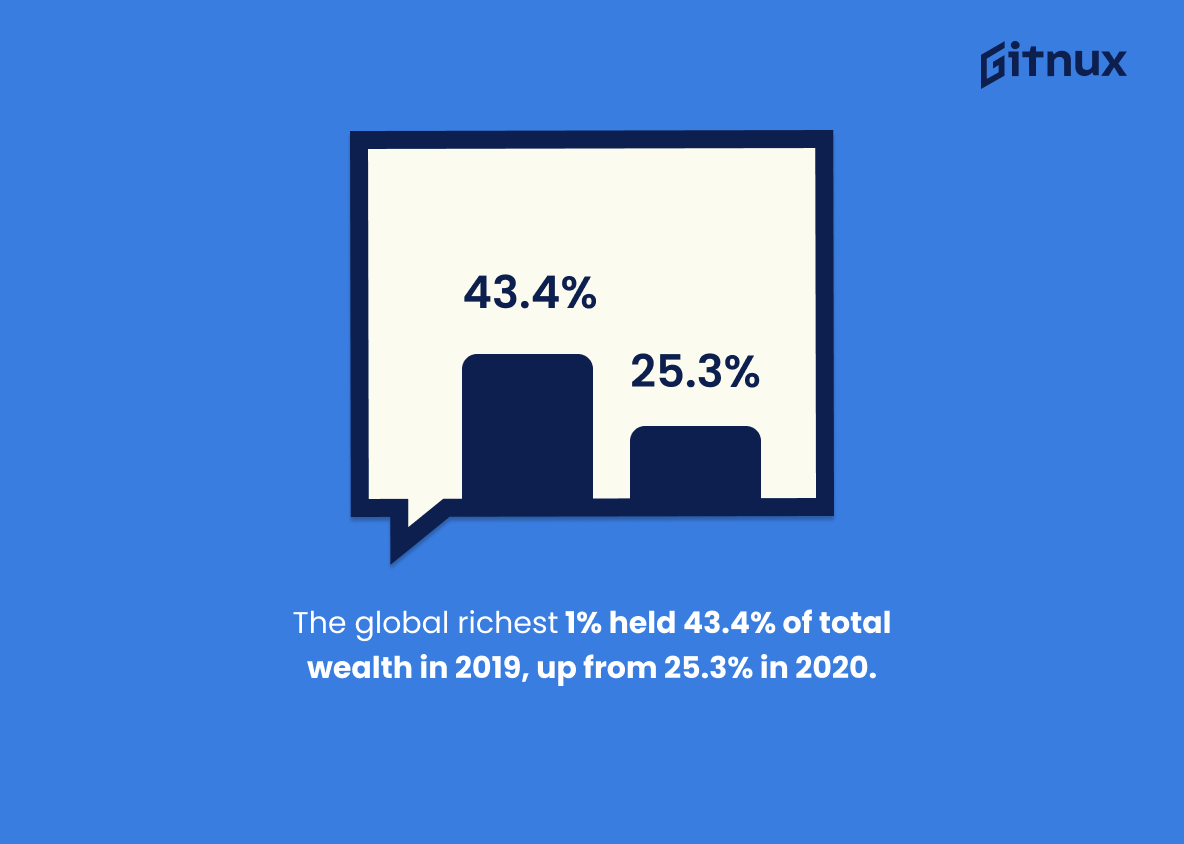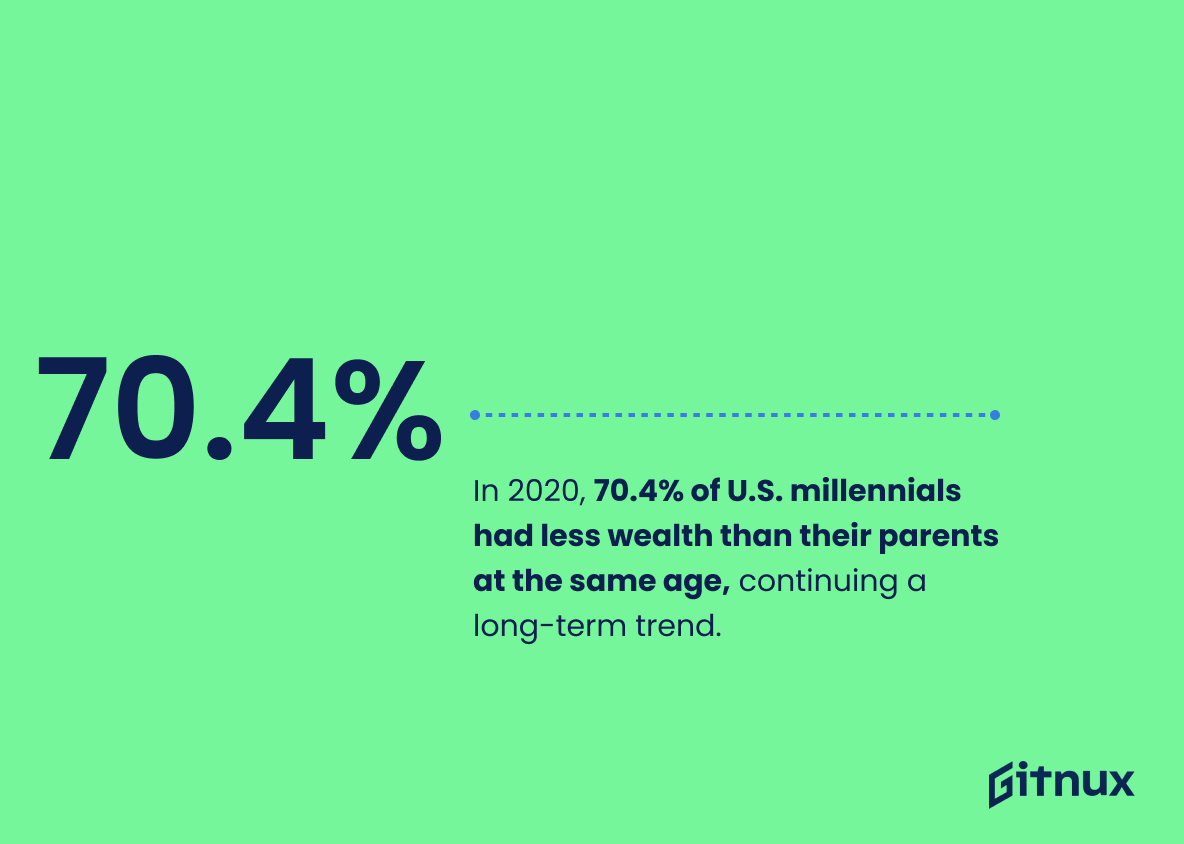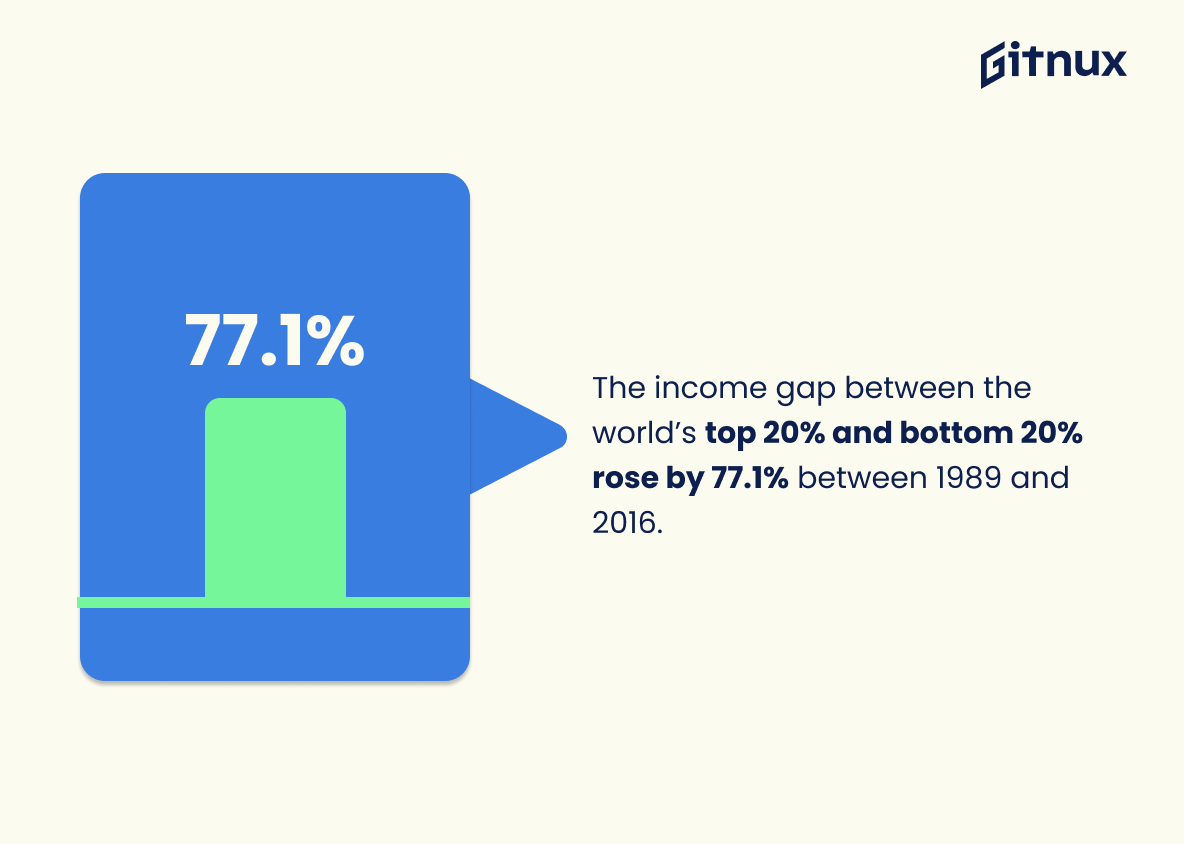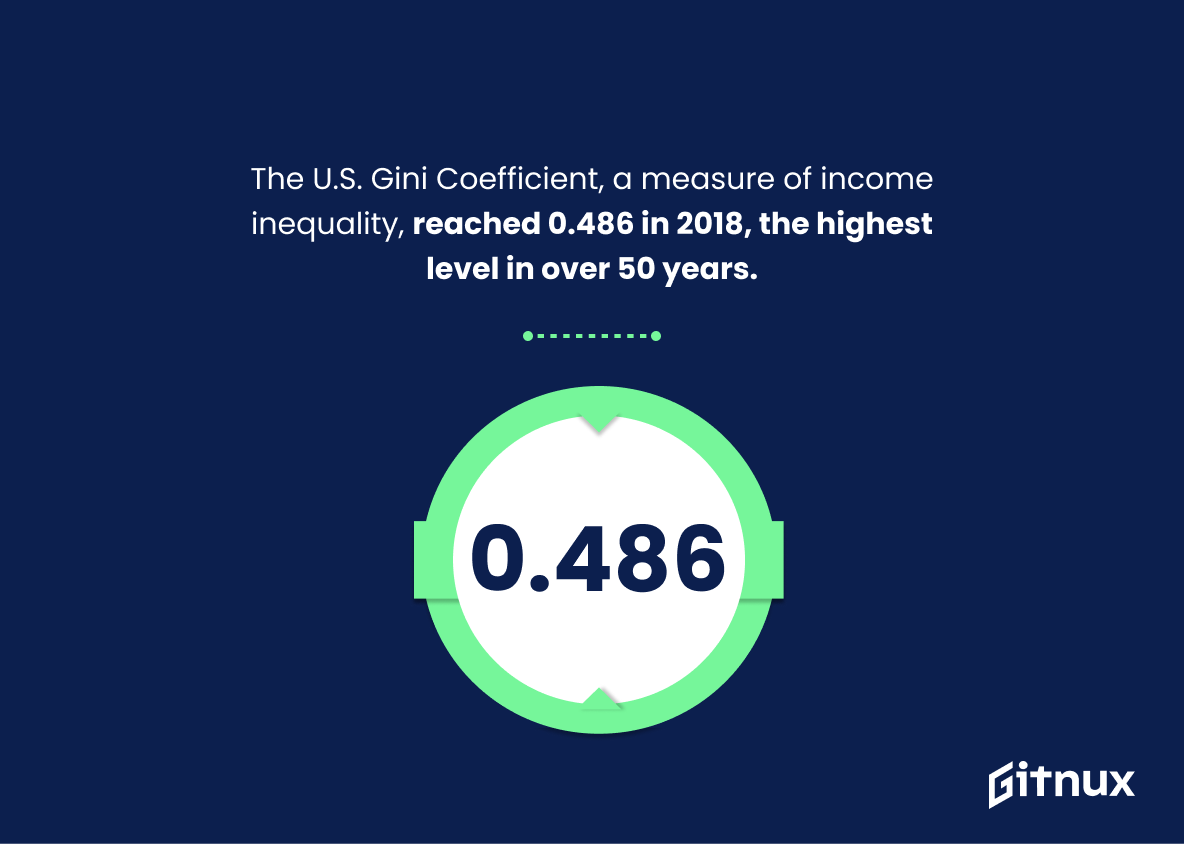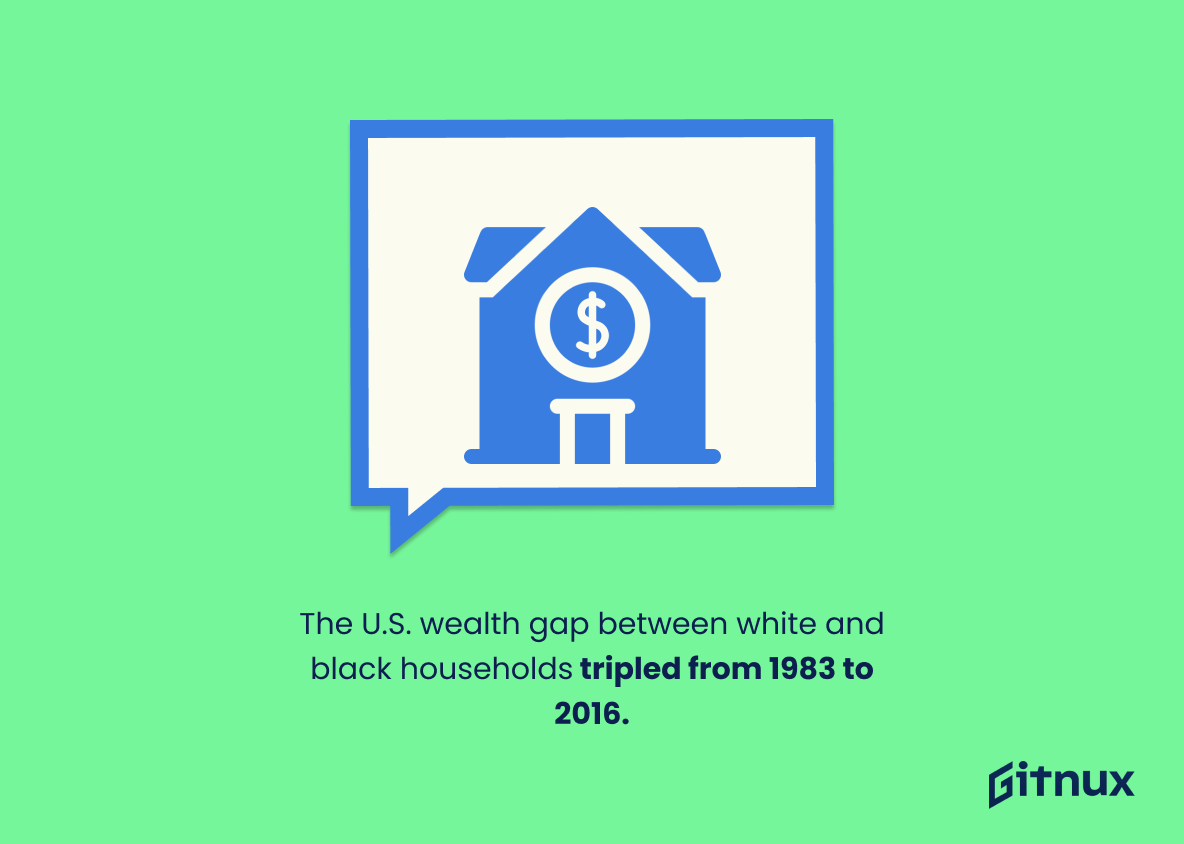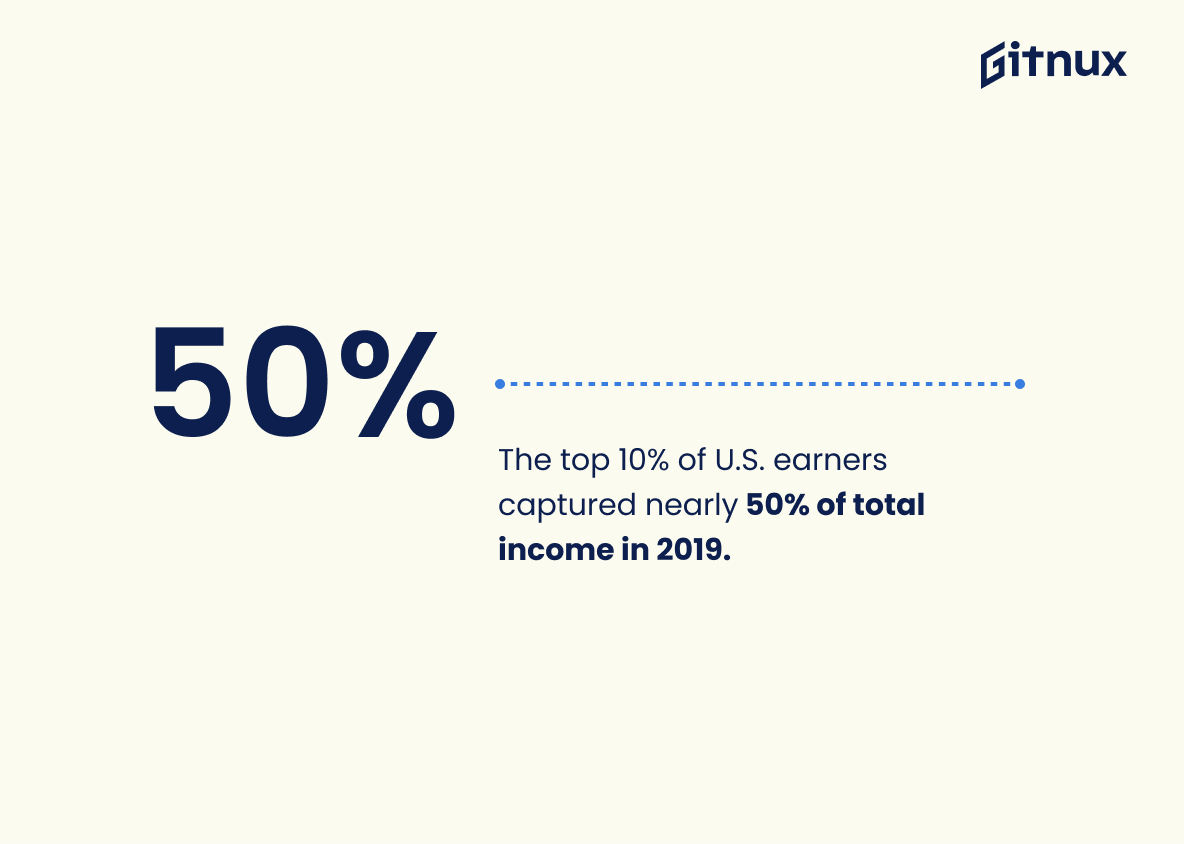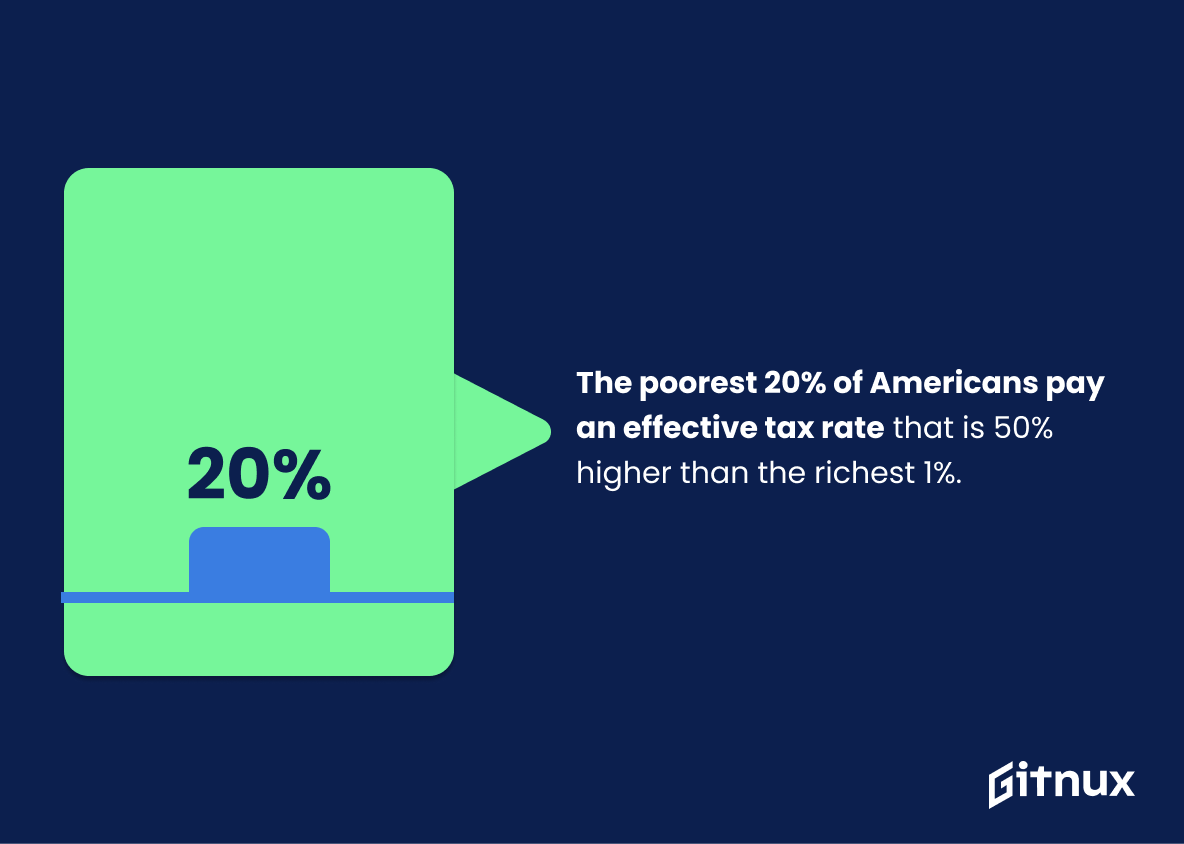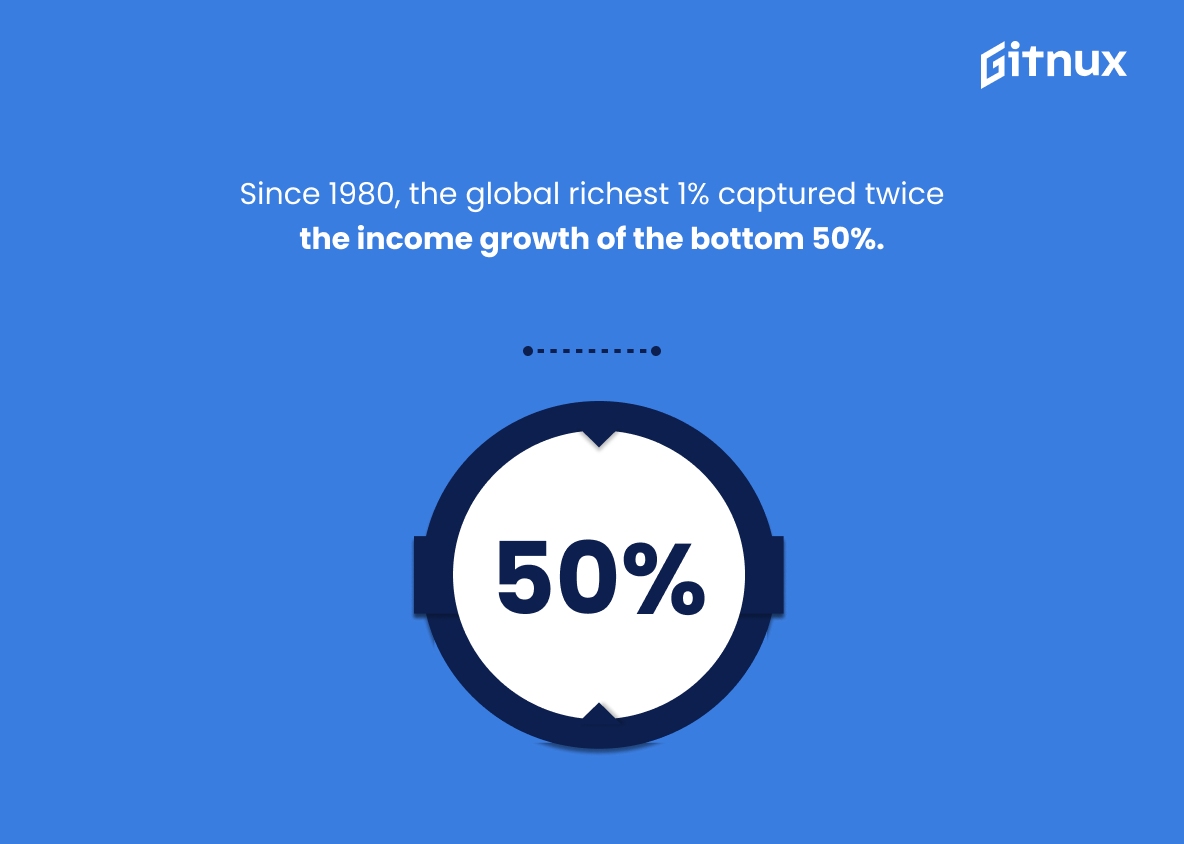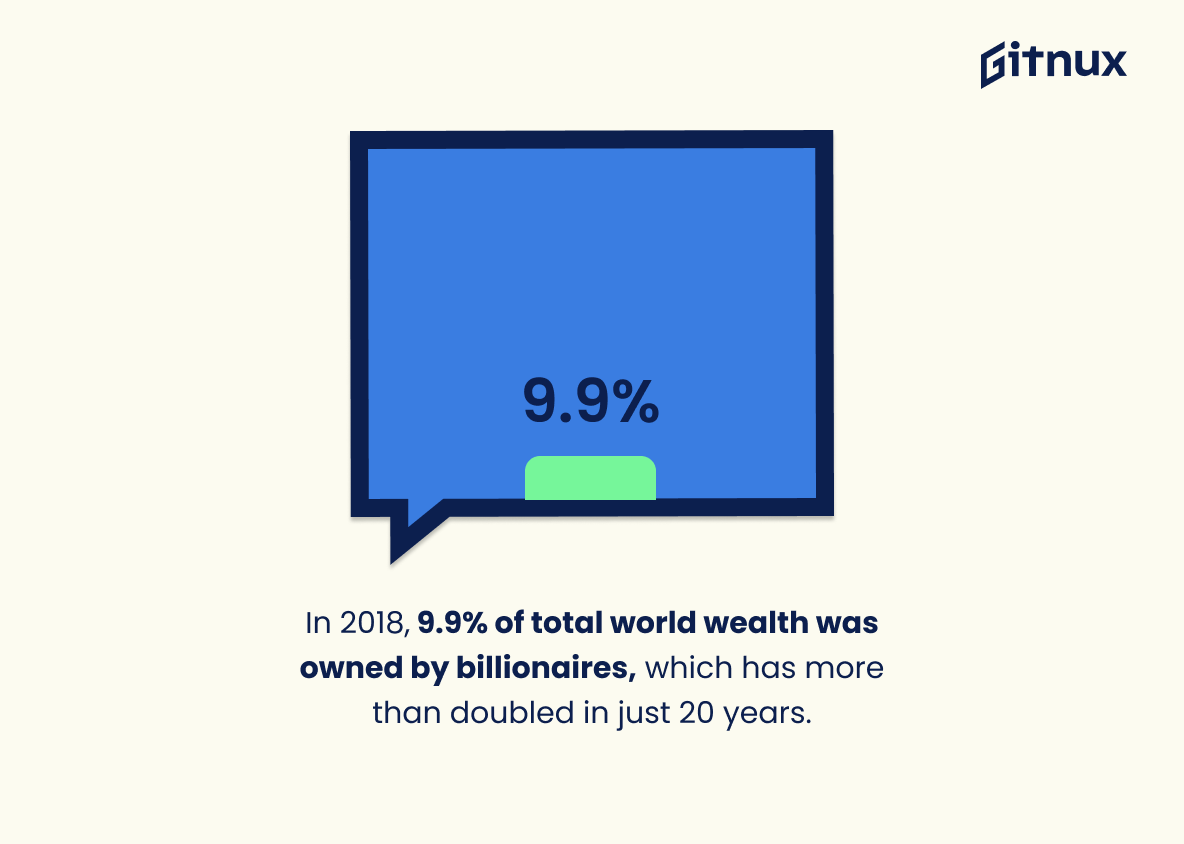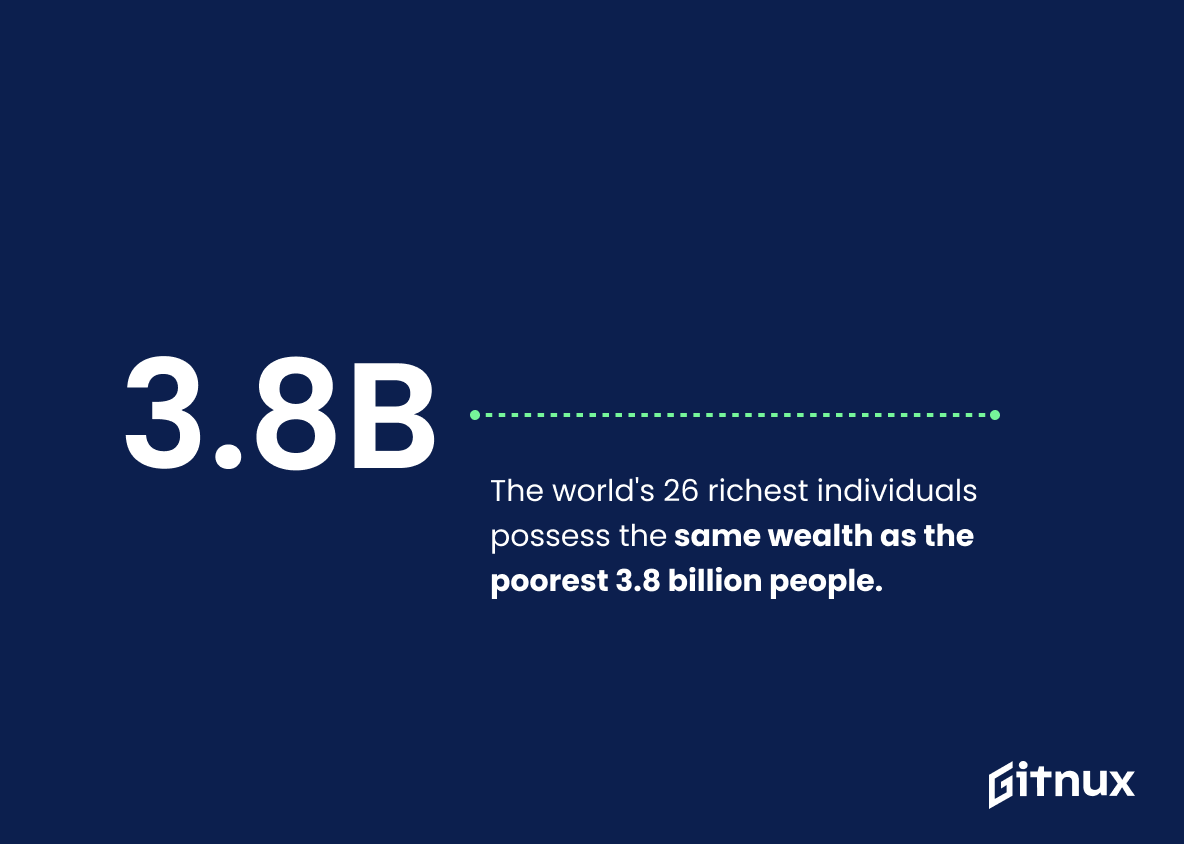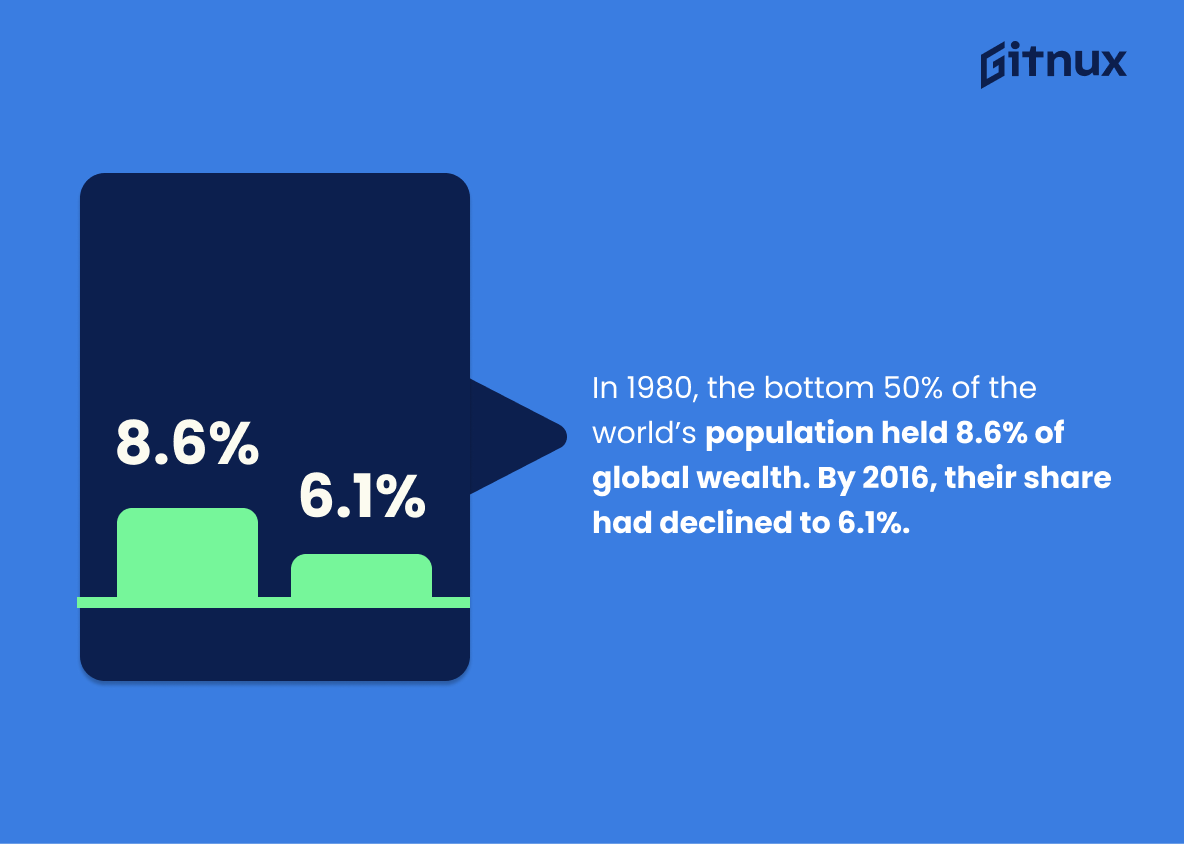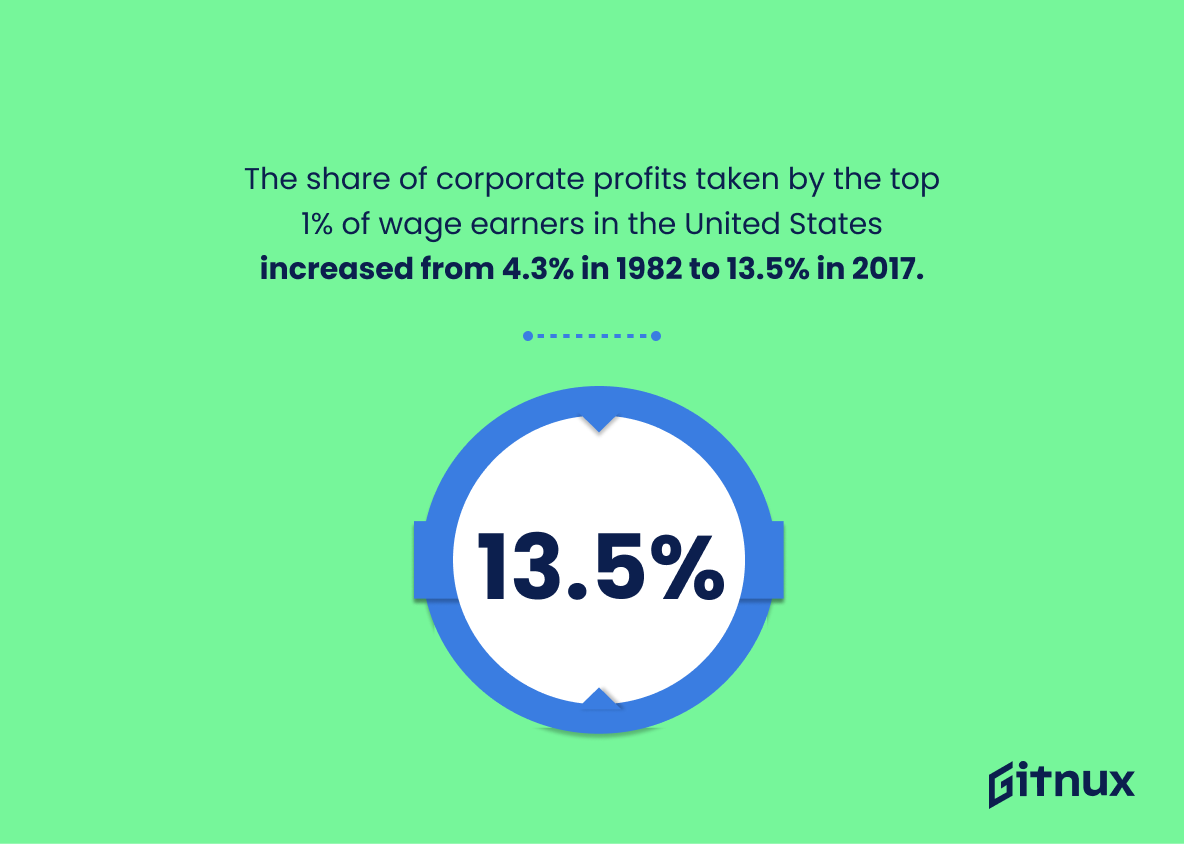The statistics on the growing wealth gap between rich and poor are staggering. From the wealthiest 1% of Americans holding 29.5% of U.S. wealth in June 2021, to billionaires’ wealth rising by 39.9% during the first year of COVID-19, it is clear that inequality has been increasing at an alarming rate over recent years both domestically and globally. In 2019, a CEO received an average pay 320 times higher than a typical worker’s salary – up from 21 times in 1965 – while 43.4% of total global wealth was held by just 1%. The income gap between top 20% and bottom 20%, meanwhile, rose 77 percent since 1989; 70 percent millennials had less net worth than their parents did at same age; Gini Coefficient reached 048 level (highest ever); poverty rate increased for first time after two decades due to pandemic; racial disparity tripled since 1983; consumer debt among richest households grew 3%; world’s 26 richest people have as much money as poorest half population combined – these facts paint a grim picture about how economic disparities continue to widen across different countries around the globe with no signs of slowing down anytime soon.
Rich Getting Richer Poor Getting Poorer Statistics Overview
In 2019, a CEO received an average of 320 times the pay of a typical worker, up from 21 times in 1965.
This statistic serves as a stark reminder of the widening gap between the rich and the poor. It paints a picture of a society where the wealthy are increasingly reaping the rewards of their success, while the average worker is left behind. This trend is indicative of a larger issue of economic inequality, where the rich are able to accumulate more wealth while the poor are unable to make ends meet. This statistic is a powerful illustration of the growing divide between the haves and the have-nots.
The global richest 1% held 43.4% of total wealth in 2019, up from 25.3% in 2020.
This statistic serves as a stark reminder of the widening gap between the rich and the poor. It shows that the wealthiest 1% of the global population have been able to increase their share of total wealth by a staggering 18.1% in just one year. This is a worrying trend that highlights the growing inequality between the haves and the have-nots, and serves as a reminder of the need for greater economic justice.
In 2020, 70.4% of millennials in the United States had less wealth than their parents at the same age, continuing a decades-long trend.
This statistic serves as a stark reminder of the widening wealth gap between generations, with millennials in the United States having less wealth than their parents at the same age. It is a testament to the fact that the rich are indeed getting richer while the poor are getting poorer, a trend that has been ongoing for decades.
The income gap between the world’s top 20% and bottom 20% rose by 77.1% between 1989 and 2016.
This statistic serves as a stark reminder of the widening gap between the world’s wealthiest and poorest citizens. It paints a picture of a world where the rich are getting richer and the poor are getting poorer, with the disparity between the two groups growing ever larger. This is a worrying trend that needs to be addressed if we are to create a more equitable society.
The U.S. Gini Coefficient, a measure of income inequality, reached 0.486 in 2018, the highest level in over 50 years.
This statistic serves as a stark reminder of the widening gap between the rich and the poor in the United States. It highlights the fact that income inequality has reached its highest level in over half a century, indicating that the rich are getting richer while the poor are getting poorer.
In 2020, the global poverty rate was estimated to have increased by 1.5 percentage points due to the pandemic, the first increase in over 20 years.
This statistic serves as a stark reminder of the widening gap between the rich and the poor, particularly in the wake of the pandemic. It highlights the fact that the pandemic has had a disproportionate impact on the world’s poorest, with the global poverty rate increasing for the first time in two decades. This serves to underscore the need for greater efforts to reduce inequality and ensure that the most vulnerable are not left behind.
The wealth gap between white and black households in the United States more than tripled between 1983 and 2016.
This statistic serves as a stark reminder of the widening economic divide between white and black households in the United States. It highlights the fact that the rich are getting richer while the poor are getting poorer, and that this trend is disproportionately affecting black households. This is an alarming trend that needs to be addressed in order to ensure that all Americans have access to economic opportunity and security.
The top 10% of U.S. earners captured nearly 50% of total income in 2019.
This statistic serves as a stark reminder of the widening gap between the rich and the poor in the United States. It highlights the fact that the top 10% of earners are capturing an increasingly large share of the nation’s total income, leaving the remaining 90% with a smaller and smaller slice of the pie. This trend is indicative of a larger problem of economic inequality in the country, and serves as a call to action for policy makers to address the issue.
The poorest 20% of Americans pay an effective tax rate that is 50% higher than the richest 1%.
This statistic serves as a stark reminder of the widening gap between the rich and the poor in America. It highlights the fact that the wealthiest 1% of Americans are paying a much lower effective tax rate than the poorest 20%, further exacerbating the inequality between the two groups. This statistic is a powerful illustration of the growing disparity between the rich and the poor in the United States, and it is a key factor in the ‘Rich Getting Richer, Poor Getting Poorer’ phenomenon.
Since 1980, the global richest 1% captured twice the income growth of the bottom 50%.
This statistic serves as a stark reminder of the widening gap between the rich and the poor. It highlights the fact that the wealthy have been able to capitalize on economic growth far more than those at the bottom of the income ladder. This trend has been ongoing for decades, and it is a major contributor to the growing inequality in our society.
The average income of the richest 10% of households in OECD countries is nearly 10 times higher than the poorest 10%.
This statistic serves as a stark reminder of the widening gap between the rich and the poor in OECD countries. It paints a vivid picture of the disparity between the wealthiest and the least fortunate, and highlights the need for greater economic equality. This statistic is a powerful illustration of the ‘rich getting richer, poor getting poorer’ phenomenon, and serves as a call to action for those who wish to address the issue.
In 2018, 9.9% of total world wealth was owned by billionaires, which has more than doubled in just 20 years.
This statistic serves as a stark reminder of the widening gap between the rich and the poor. It shows that in the past two decades, the wealth of billionaires has more than doubled, while the wealth of the rest of the world has not kept up. This is a clear indication that the rich are getting richer while the poor are getting poorer.
The 26 richest people in the world have the same net wealth as the poorest half of the world’s population, about 3.8 billion people.
This statistic is a stark reminder of the immense wealth gap between the world’s richest and poorest. It highlights the fact that the rich are getting richer while the poor are getting poorer, with the wealthiest individuals having the same amount of wealth as billions of people combined. This is a troubling statistic that should be addressed in order to create a more equitable society.
In 1980, the bottom 50% of the world’s population held 8.6% of global wealth. By 2016, their share had declined to 6.1%.
This statistic serves as a stark reminder of the widening gap between the rich and the poor. It shows that the bottom 50% of the world’s population has seen their share of global wealth decrease significantly over the past 36 years, while the share of the top 50% has increased. This is a troubling trend that highlights the need for greater economic equality and social justice.
The share of corporate profits taken by the top 1% of wage earners in the United States increased from 4.3% in 1982 to 13.5% in 2017.
This statistic serves as a stark reminder of the widening gap between the rich and the poor in the United States. It shows that the top 1% of wage earners have been able to capture an ever-increasing share of corporate profits, while the rest of the population has seen their share of the pie shrink. This is a troubling trend that highlights the need for policies that promote economic equality and opportunity for all.
The average wealth of the poorest 50% of British households fell by 20% between 2005 and 2015, while the wealthiest 10% saw an increase of 64%.
This statistic serves as a stark reminder of the widening gap between the rich and the poor in Britain. It highlights the fact that the wealthiest 10% of households have seen their wealth increase significantly over the past decade, while the poorest 50% have seen their wealth decrease. This is a worrying trend that needs to be addressed in order to ensure that everyone has a fair chance of achieving financial security.
Conclusion
The statistics presented in this blog post paint a stark picture of the growing wealth inequality around the world. The wealthiest 1% of Americans held 29.5% of U.S. wealth in June 2021, while billionaires’ wealth rose by 39.9%. In 2019, CEOs earned 320 times more than typical workers and 43.4% of global total wealth was owned by the richest 1%. 70.4% of millennials had less wealth than their parents at the same age and income gaps between top 20-bottom 20 percentiles increased 77%. Gini coefficients reached 0%, poverty rates increased due to pandemic, racial disparities tripled since 1983 and consumer debt is increasingly concentrated among high earners; all these facts point towards an alarming trend that needs urgent attention from policy makers worldwide if we are to reverse it before it’s too late for future generations
References
0. – https://www.www.stlouisfed.org
1. – https://www.wid.world
2. – https://www.www.census.gov
3. – https://www.www.oecd.org
4. – https://www.socialequity.duke.edu
5. – https://www.www.nber.org
6. – https://www.www.credit-suisse.com
7. – https://www.www.statista.com
8. – https://www.blogs.worldbank.org
9. – https://www.doi.org
10. – https://www.www.oxfam.org
11. – https://www.www.taxpolicycenter.org
12. – https://www.wir2018.wid.world
13. – https://www.ips-dc.org
14. – https://www.www.ubs.com
15. – https://www.www.equalitytrust.org.uk
16. – https://www.www.epi.org
